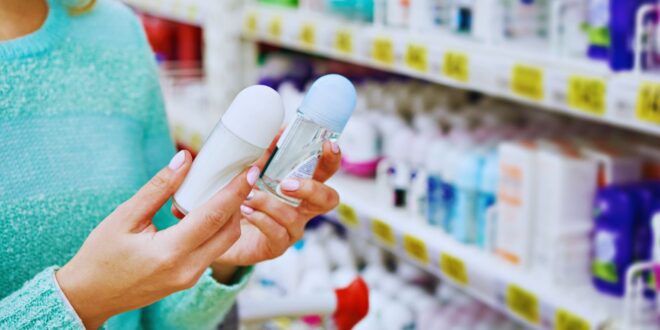Introduction to Airline Regulations
When preparing for air travel, understanding airline regulations concerning the transport of liquids, gels, and aerosols is essential. These rules are primarily enforced by aviation authorities such as the Transportation Security Administration (TSA) in the United States. The primary objective of these regulations is to ensure the safety and security of all passengers and crew members on board.
One of the most well-known regulations is the 3-1-1 rule, which dictates that passengers may carry liquids, gels, and aerosols in containers no larger than 3.4 ounces (100 milliliters). These containers must fit within a single, clear, quart-sized plastic bag. This rule applies to items such as deodorants, shampoos, and toothpaste, and is designed to limit the quantity of potentially hazardous materials that can be brought into the cabin.
These restrictions are in place due to the potential dangers posed by certain liquid and gel substances, which can be used to create explosive devices. By limiting the amount that each passenger can carry, aviation authorities aim to minimize any risk. Additionally, this measure simplifies the screening process, allowing security personnel to more efficiently inspect and clear passengers for travel.
In checked baggage, the rules are generally more lenient. Larger quantities of liquids, gels, and aerosols, including larger deodorants, are permitted as long as they comply with the airline’s weight and volume restrictions. However, it is important to note that certain items, such as flammable aerosols, may still be prohibited even in checked luggage.
Overall, these regulations are crucial for maintaining a safe and secure flying environment. By adhering to these guidelines, passengers can contribute to a smoother security process and a safer journey for everyone on board.
Understanding the 3-1-1 Rule
The Transportation Security Administration (TSA) has established the 3-1-1 rule to regulate the size and quantity of liquids, gels, and aerosols that passengers can carry in their hand luggage. This rule is crucial for maintaining security while ensuring that passengers can carry essential items. The “3-1-1” rule stands for three key components: 3.4 ounces or 100 milliliters per container, one quart-sized clear plastic bag, and one bag per passenger.
Firstly, the rule stipulates that each container of liquid, gel, or aerosol must not exceed 3.4 ounces or 100 milliliters. This applies to all such items, including deodorants. Whether you prefer gel, spray, or roll-on deodorants, they must adhere to this size limit if you wish to carry them in your cabin luggage. Any container larger than this will need to be placed in checked baggage or left behind.
Secondly, all containers must fit within a single quart-sized, clear plastic bag. This bag should be resealable, allowing easy inspection by TSA agents at security checkpoints. The clarity of the bag ensures that its contents are visible, facilitating a smooth security process. It’s important to note that even if individual containers are compliant in size, they must collectively fit within this quart-sized bag.
Lastly, each passenger is allowed only one such quart-sized bag. This restriction means that passengers must be selective about which liquids, gels, and aerosols they bring on board. If you need to carry multiple items, consider consolidating where possible, or purchase travel-sized versions that conform to these regulations.
Understanding and adhering to the 3-1-1 rule is essential for a hassle-free travel experience. By ensuring your deodorant and other liquid or gel items comply with these guidelines, you can move through security checkpoints more efficiently and avoid the inconvenience of having items confiscated. This preparation can save time and reduce stress, enabling a smoother start to your journey.
Types of Deodorants and Their Regulations
When traveling by air, it is essential to understand the Transportation Security Administration (TSA) regulations regarding deodorant types and their compliance with the 3-1-1 rule. This rule allows passengers to carry liquids, aerosols, gels, creams, and pastes in containers of 3.4 ounces (100 milliliters) or less, within a single, quart-sized, clear plastic, zip-top bag. Each passenger is limited to one bag of these items. Different types of deodorants fall under various categories, each with specific regulatory guidelines.
Solid Deodorants: Solid deodorants are not considered liquids or gels and thus are not restricted by the 3-1-1 rule. Travelers can carry these in their carry-on luggage without any size limitations. Solid deodorants are convenient for air travel due to their ease of transport and lack of restrictions.
Gel Deodorants: Gel deodorants, categorized under the 3-1-1 rule, must comply with the liquid and gel regulations. Each container must be 3.4 ounces (100 milliliters) or less and fit within the quart-sized bag. Travelers should be cautious to ensure their gel deodorant meets these requirements to avoid confiscation at security checkpoints.
Roll-On Deodorants: Roll-on deodorants, often containing liquid, also fall under the 3-1-1 rule. These must be in containers of 3.4 ounces (100 milliliters) or less and packed within the quart-sized, clear plastic bag. Ensuring compliance helps streamline the security process and prevents delays.
Spray Deodorants: Spray deodorants, which include aerosols, are subject to the 3-1-1 rule. Each aerosol can must be 3.4 ounces (100 milliliters) or less and fit into the quart-sized bag. Given their flammable nature, spray deodorants are strictly regulated, and travelers should double-check their sizes before packing.
Cream Deodorants: Cream deodorants fall under the category of creams and pastes. As such, they are regulated by the 3-1-1 rule. Travelers need to ensure their cream deodorant containers are 3.4 ounces (100 milliliters) or less and placed in the quart-sized, clear plastic bag.
Understanding these regulations helps travelers pack appropriately and ensures a smooth security screening process. Whether opting for solid, gel, roll-on, spray, or cream deodorants, being aware of their respective guidelines is crucial for hassle-free air travel.
Packing Deodorant in Carry-On Luggage
When packing deodorant in carry-on luggage, it is essential to adhere to the Transportation Security Administration (TSA) guidelines to ensure a smooth travel experience. The primary rule is that liquid, gel, or aerosol deodorants must be in containers of 3.4 ounces (100 milliliters) or less. This regulation ensures that the deodorant fits within the standard quart-sized plastic bag allowed for liquids in carry-on luggage.
Choosing the right size and type of deodorant is crucial. Solid stick deodorants are usually a hassle-free option since they are not subject to the liquid restrictions. However, if you prefer liquid or gel deodorants, make sure to purchase travel-sized versions that comply with the TSA regulations. These smaller containers are readily available in most drugstores, supermarkets, and online retailers.
Proper placement of deodorant in your carry-on is another critical aspect. All liquid, gel, or aerosol deodorants must be placed in a quart-sized, clear plastic bag along with other liquids. This bag should be easily accessible, as you will need to remove it from your luggage and place it in a separate bin during security checks. Ensuring easy access to this bag can expedite the screening process and minimize inconvenience.
Travel-sized deodorants offer significant benefits, particularly for frequent flyers. They save space in your luggage, making it easier to pack other essentials. Additionally, these smaller containers reduce the risk of exceeding the liquid allowance, thus avoiding potential issues at security checkpoints. Many brands offer travel-sized versions of their popular deodorants, ensuring you can still use your preferred product while complying with airline regulations.
In conclusion, understanding and adhering to TSA guidelines for packing deodorant in carry-on luggage is vital. By selecting the appropriate size and type, placing it correctly in a quart-sized plastic bag, and ensuring it is accessible for security checks, travelers can enjoy a hassle-free journey. The convenience and availability of travel-sized deodorants further enhance the travel experience, making it easier to stay fresh and comfortable while on the go.
Packing Deodorant in Checked Luggage
When it comes to packing deodorant in checked luggage, travelers enjoy a bit more flexibility compared to carry-on baggage. Unlike the stringent regulations for liquids, gels, and aerosols in carry-on items, checked luggage allows for more leniency. Passengers are not confined to the 3.4-ounce (100 milliliters) rule that applies to carry-ons. This means one can pack deodorants of virtually any size, whether it be full-sized sticks, sprays, or roll-ons, without concern for exceeding permissible limits.
However, while there are no specific size restrictions for deodorants in checked baggage, it is still important to pack them properly to prevent any mishaps. Aerosol deodorants, for instance, should be securely packed to avoid accidental discharge during transit. Placing these items in a sealed plastic bag can help contain any potential leaks and protect other belongings in your suitcase. Similarly, roll-on and gel deodorants should be tightly sealed and ideally wrapped in a plastic bag or bubble wrap for added protection.
Additionally, it is advisable to consider the climate and temperature variations your luggage might encounter. Extreme temperatures can affect the consistency and effectiveness of deodorants, especially those in aerosol or gel form. To mitigate this, storing deodorants in the center of your suitcase, surrounded by clothing, can provide some insulation against temperature fluctuations.
In summary, while you have the freedom to pack larger and multiple deodorants in checked luggage, careful packing is essential to prevent leaks and damage. By following these tips, you can ensure your deodorant arrives at your destination intact and ready for use, allowing you to stay fresh and confident throughout your travels.
“`html
Travel-Friendly Deodorant Brands and Products
When preparing for air travel, it is crucial to select deodorant products that comply with airline regulations, particularly those set by the Transportation Security Administration (TSA). Understanding these guidelines and knowing which products meet them can make the packing process smoother and ensure a hassle-free security check.
For travelers looking for solid deodorants, brands like Dove, Secret, and Native offer excellent options. These solid deodorants are typically under the TSA’s 3.4-ounce limit for liquids, gels, and aerosols, making them a convenient choice for carry-on luggage. Solid deodorants are also less likely to leak or spill, providing peace of mind during your journey.
Travel-sized spray deodorants are another viable option. Brands such as Degree, Old Spice, and Dove offer mini versions of their popular spray deodorants, which are well within the TSA’s size requirements. These travel-sized sprays are perfect for those who prefer the application of a spray over a solid. The compact size ensures they fit easily into your toiletries bag without taking up much space.
For those who favor gel deodorants, there are TSA-approved options available. Brands like Gillette and Secret manufacture gel deodorants in travel-friendly sizes. These are typically packaged in containers that are 3.4 ounces or less, ensuring compliance with airline regulations. Gel deodorants provide a smooth application and are a suitable alternative for travelers who prefer this type of product.
By choosing travel-friendly deodorant brands and products, you can ensure that your personal care routine remains uninterrupted during your travels. Whether you prefer solid, spray, or gel deodorants, there are numerous options available that meet TSA guidelines, making your air travel experience more convenient and stress-free.
Tips for Staying Fresh During Long Flights
Maintaining personal hygiene during long flights goes beyond simply packing the right size deodorant. To ensure you stay fresh and comfortable, consider a few additional strategies. One of the most effective ways to manage personal cleanliness is by using wet wipes. These handy wipes can be used to freshen up your face, hands, and other exposed skin areas, offering a quick and easy way to combat the stale feeling that often accompanies extended travel. Opt for wipes with a mild, refreshing scent to enhance your feeling of cleanliness.
Another crucial aspect of staying fresh is choosing the right attire. Wearing breathable fabrics, such as cotton or moisture-wicking synthetics, helps regulate your body temperature and reduces sweating. These materials allow better air circulation, keeping you cooler and more comfortable throughout the flight. Additionally, layering your clothing can be beneficial. It allows you to adjust your outfit according to the cabin temperature, which can fluctuate during the flight.
Hydration also plays a pivotal role in maintaining personal hygiene and overall comfort. Drink plenty of water before and during your flight to stay hydrated. Dehydration can lead to dry skin and a general feeling of discomfort, so it’s essential to consume fluids regularly. Avoid excessive consumption of caffeinated or alcoholic beverages, as these can contribute to dehydration.
Lastly, consider carrying a small toiletry kit in your carry-on bag. This kit can include travel-sized toothpaste and toothbrush, a small bottle of hand sanitizer, and a miniature deodorant. Freshening up in the airplane restroom with these essentials can significantly improve your comfort levels. By implementing these tips, you can maintain personal hygiene and stay refreshed, making your long flight a more pleasant experience.
Conclusion and Final Tips
In summary, understanding the regulations surrounding the size of deodorant you can take on a plane is crucial for a smooth travel experience. As discussed, travelers are generally permitted to carry deodorant in containers that are 3.4 ounces (100 milliliters) or smaller in their carry-on luggage, to comply with TSA regulations. Larger sizes are permissible in checked baggage. Adhering to these guidelines ensures that you avoid unnecessary delays or confiscations at security checkpoints.
To further streamline your journey, consider the following practical tips. First, always double-check the latest guidelines from your specific airline and the Transportation Security Administration (TSA) before packing. Regulations can change, and being up-to-date can save you from potential hassles. Additionally, place your liquid and gel deodorants in a clear, resealable plastic bag along with other toiletries to expedite the screening process.
If you encounter any issues at security, remain calm and cooperative. Security personnel are there to ensure everyone’s safety and following their instructions will help resolve matters quickly. Should your deodorant be flagged during screening, you may be asked to discard it or move it to your checked luggage if time permits.
Lastly, consider carrying a travel-sized stick or solid deodorant as an alternative. These types are less likely to cause issues at security checkpoints since they are often not subject to the same liquid and gel restrictions. Being prepared with a backup option can provide peace of mind and keep you fresh throughout your journey.
By following these tips and staying informed about airline regulations, you can ensure a hassle-free travel experience and focus on enjoying your trip.
 Travelers Journey Hub
Travelers Journey Hub




